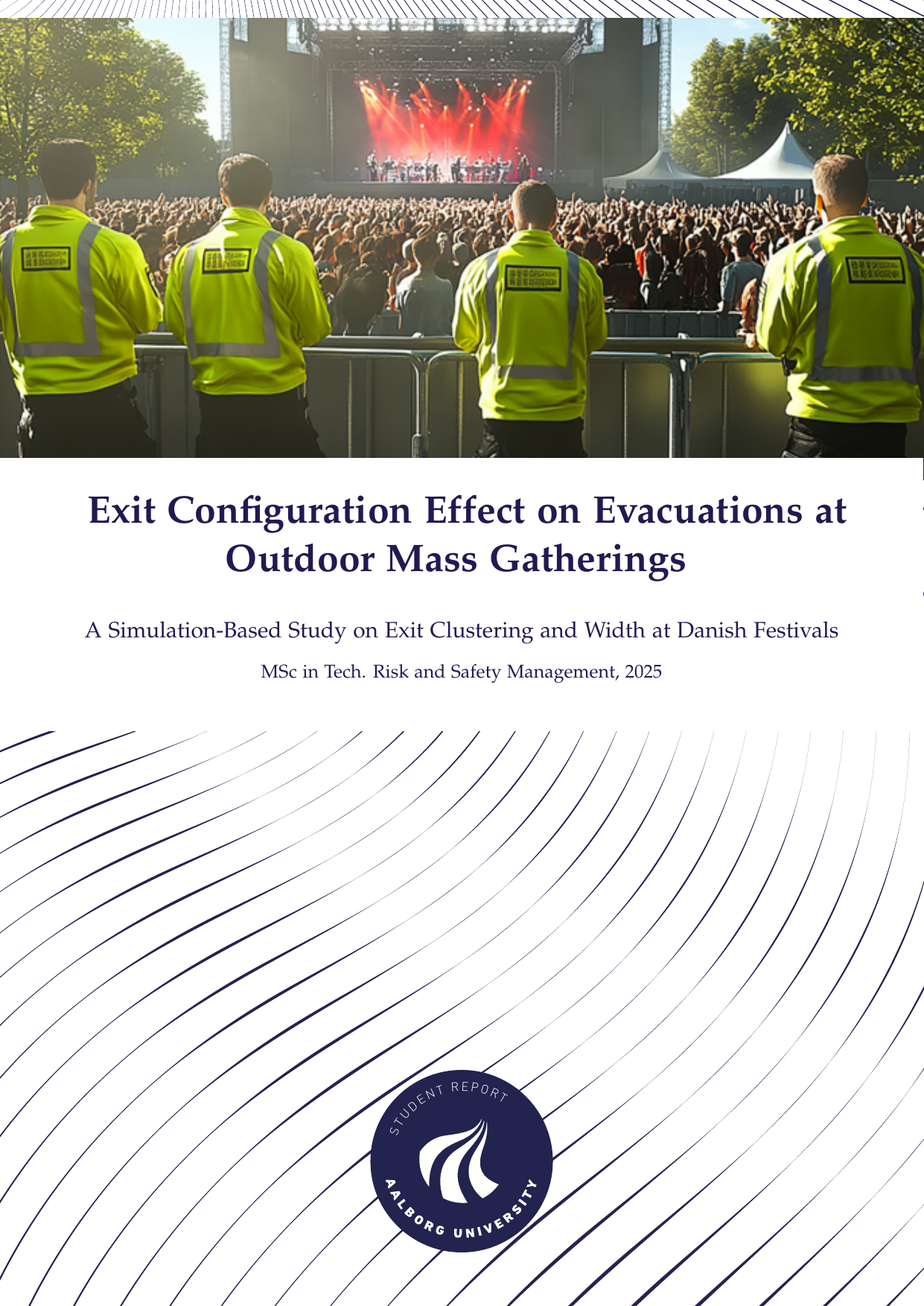
Exit Configuration Effect on Evacuations at Outdoor Mass Gatherings: A Simulation-Based Study on Exit Cluster- ing and Width at Danish Festivals
Author
Term
4. term
Education
Publication year
2025
Submitted on
2025-06-01
Abstract
The present master’s thesis investigates the effect of exit configurations on evac- uation performance in outdoor mass gath- erings, using advanced agent-based simu- lation techniques. The study is inspired by safety and emergency preparedness in Danish festivals, which often attract large crowds in open-air environments. To this end, simulations are conducted using Pathfinder software to evaluate how exit width, placement, and clustering impact egress times and congestion levels. The response surface method is applied in or- der to formulate the egress time as a func- tion of statistically significant exit confir- mation parameters. The results indicate that while wider exits significantly reduce evacuation time, the optimal arrangement involves a balanced trade-off between exit width and the number of available ex- its. Exit clustering emerges as a critical factor, influencing crowd flow dynamics and the formation of bottlenecks. Prac- tical recommendations for event organiz- ers include optimizing exit placement and width to enhance evacuation efficiency while maintaining compliance with safety regulations. The findings underscore the importance of simulation-based analysis in improving the safety and operational planning of mass gatherings, with impli- cations for policymakers and festival or- ganizers in Denmark and beyond.
The present master’s thesis investigates the effect of exit configurations on evac- uation performance in outdoor mass gath- erings, using advanced agent-based simu- lation techniques. The study is inspired by safety and emergency preparedness in Danish festivals, which often attract large crowds in open-air environments. To this end, simulations are conducted using Pathfinder software to evaluate how exit width, placement, and clustering impact egress times and congestion levels. The response surface method is applied in or- der to formulate the egress time as a func- tion of statistically significant exit confir- mation parameters. The results indicate that while wider exits significantly reduce evacuation time, the optimal arrangement involves a balanced trade-off between exit width and the number of available ex- its. Exit clustering emerges as a critical factor, influencing crowd flow dynamics and the formation of bottlenecks. Prac- tical recommendations for event organiz- ers include optimizing exit placement and width to enhance evacuation efficiency while maintaining compliance with safety regulations. The findings underscore the importance of simulation-based analysis in improving the safety and operational planning of mass gatherings, with impli- cations for policymakers and festival or- ganizers in Denmark and beyond.
Keywords
Documents
